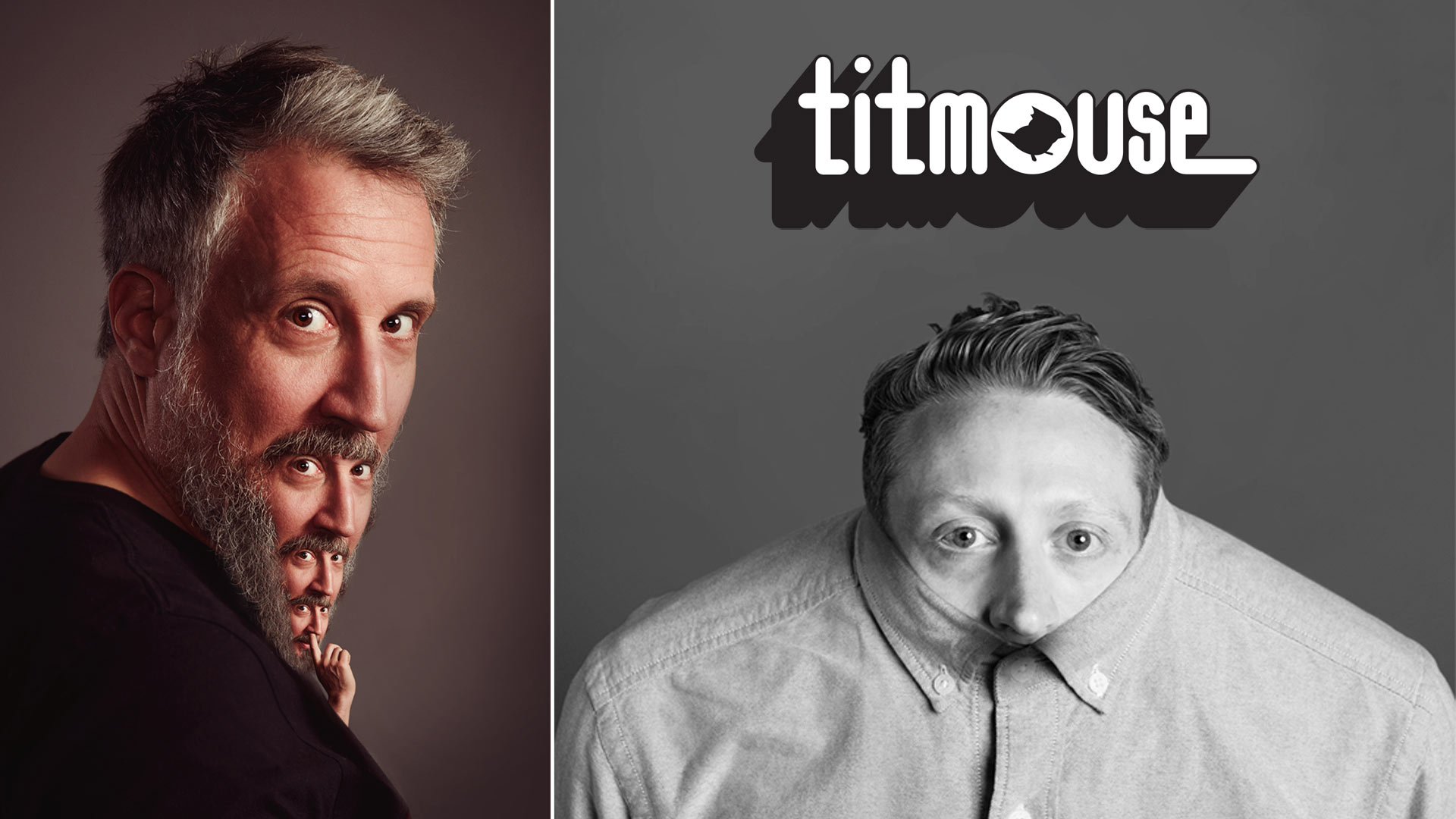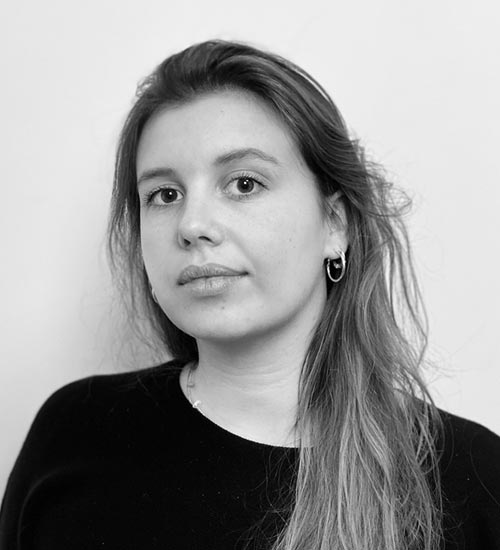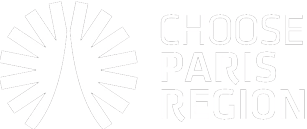
Titmouse is an award-winning animation studio renowned for its bold, irreverent, and cutting-edge productions.
With offices in Los Angeles, New York, Vancouver, and now Paris, the company has built a strong reputation for creating original content as well as collaborating with major global platforms and studios.
By opening its first European studio in the Paris Region, Titmouse joins one of the world’s most vibrant creative hubs, drawing on a unique pool of artistic talent, internationally recognized animation schools, and a thriving audiovisual ecosystem.
In this exclusive interview, we spoke with Ben Kalina, Titmouse's COO, and Antonio Canobbio, Titmouse's CCO to understand the company’s motivations for expanding in the Paris Region and to learn about this new chapter that marks an exciting step in the Titmouse’s global journey, bringing fresh opportunities for collaboration, innovation, and storytelling made in the Paris Region.
To begin, could you briefly introduce Titmouse and your role within the organization?
Since its inception 25 years ago, Titmouse has evolved into an award-winning, multi-hyphenated animation studio and pop culture brand. Some of the studio’s most celebrated recent projects include Big Mouth, The Legend of Vox Machina, The Venture Bros., Star Trek: Lower Decks, and Beavis and Butt-Head, to name a few. With the strength of a major studio and the mindset of an indie company, Titmouse has become one of the most well-known and prolific animation studios in the world, challenging the idea of what an animation company can look like by focusing on comedy, subversive and counterculture communities, and expanding into other avenues for fans to enjoy including merchandise, live shows and events, festivals, interactive experiences, and so much more.
BK: I’m the Chief Operating Officer of Titmouse. As the COO, I oversee production and development across our three studios. I also facilitate all current and developing productions, manage production techniques, and ensure everything we do helps promote and maintain the studios’ overall vision.
AC: I'm the Chief Creative Officer of Titmouse. As the CCO, I oversee the creative direction of all Titmouse projects. Those projects include, but are not limited to, Star Trek: Lower Decks, The Legend of Vox Machina, Mighty Nein, Fairfax, Love, Death and Robots: How Zeke got religion, and The Boys Presents: Diabolical.
What made Paris Region the ideal location for your EU Region's expansion?
BK: We’ve been working with artists in France for a long time, going back at least 10 years. Over time, that team grew naturally through them recommending friends. Antonio also has a great relationship with all the schools and studios in France so slowly the team grew to a decent size. In 2019 we started considering opening up a physical space to house the team and have them take on projects. Having a physical location in France would also allow us to get the TRIP credit which would give an opportunity to grow our team further. Unfortunately 2020 happened soon after we started looking into space and we paused our search for a little while but kept the team working remotely.
People recommended various regions to us for financial reasons (cost of operation, regional credits, etc…) but we knew that Paris was the best location for us. You have proximity to schools, other studios are based in Paris so there’s a natural ecosystem for artists to move around, and it's easy for foreign clients, or artists working outside of Paris to get to the city.
AC: Trying to keep this short, while hiding my excitement. I’m originally from Paris (Proche Banlieue, to be exact), and after 27 years in the US there was really only one place that made sense for our French studio: Paris, ma ville natale. So yes, it feels a bit like a victory lap!
But the real reason is talent. Europe has a unique kind of creative energy shaped by its culture-forward mindset and incredible schools—but the biggest concentration is in France, especially in Paris. For the type of productions we’re building, it just made sense to come to this hub and open a playground for this amazing pool of talent.
Paris Region's animation ecosystem generates significant economic value while fostering creative excellence. What strategic advantages and market opportunities in Paris Region have proven most valuable for accelerating your growth?
BK: Having opened studios in different cities before, it's important to have a developed ecosystem for production. That means:
- Schools - For talent and recruiting, also opportunities to collaborate with schools on curriculum and training.
- Other studios - If you’re in a region with less studios and there’s a break between projects, artists will move away. Having other studios nearby means that talent is able to move around. Also, studios support each other, even if technically we’re in competition for work. They refer partners and vendors and we can all benefit from each other's experiences.
- Clients - While initially many of our existing clients are working with our Paris team, there’s a lot of opportunity for us to work with clients based in Paris. Broadcasters is an easy one, but Titmouse also produces a lot of advertising and brand work. Being able to meet clients and do reviews in-person is important.
The Region is home to world-renowned institutions like The Gobelins cultivating exceptional animation talent. What profiles do you recruit in Paris Region, and what would you say to local talent to attract them to Titmouse?
AC: France has many great schools, and Paris is home to some of the very best—we already work with quite a few, and hope to expand that. If students or alumni don’t know Rachel, our recruiter, they should definitely reach out to her.
At Titmouse, we build custom crews for every project, carefully balancing skills so that no team has weak spots. That means we draw from different schools depending on the production and the type of talent they’ve helped shape. What we want local talent to know is that Titmouse is a place where their creativity won’t just fit into a pipeline—it will help define the work.
The Mister Miracle series was just announced at the Annecy International Animation Film Festival. How do you see this kind of opportunity shaping the future of Titmouse and its partnerships in France?
BK: Mister Miracle has a unique style that’s a perfect fit for the team over here. While the talent pools in each city we work in are broad there are styles that artists are regionally trained to work in. I can’t say much about this series right now, but the look of this show is very well suited for our team over in Paris.
AC: I’ll echo what Ben is saying: we’ve always built teams around the project to get the best possible outcome. At Titmouse, we pride ourselves on not having a house style—that’s what lets us take on any kind of new graphic challenge. With this new branch, our goal is the same: to foster as many styles and voices as possible, so we can keep pushing boundaries and creating cooler and cooler things for the future.
France has developed strong financial incentives to attract international productions. From your perspective, how do these measures create opportunities for Titmouse to grow here?
BK: Tax incentives help with productions for sure, but we’ve always had a habit of putting every dollar on screen and really pushing the complexity of the series. Having access to the TRIP credit can make some more complicated series possible and also keep more work local in the region providing the credit.
The Tax Rebate for International productions (TRIP) concerns projects wholly or partly made in France and initiated by a non-French company. The TRIP amounts up to 30% (or 40%, if the French VFX expenses are more than €2M) of the qualifying expenditures incurred in France, and can total a maximum of €30 million per project.
Can you share how Choose Paris Region facilitated your expansion project in France, and what impact it had on your timeline?
BK: Working with the Choose Paris Region team was great. While we know how to make a great show and had our creative teams lined up, operating in Paris is new to us. CPR gave us a lot of referrals and direction as we started learning more about how to start our operation in Paris.
What's your #1 piece of advice, based on your own experience, for those considering moving to the Paris Region?
BK: As a foreign company, working in a new country is different. Banks, Legal, HR, Landlords/Leases, all have different rules, timelines, and customs that you won’t know about until you’re in it. It's not wrong, or bad or difficult, just different. So find partners that can help you navigate the system, because you won’t know what you don’t know until something happens.
AC: Same as Ben, just in different words: stay light on your feet and let go of preconceived ideas about how things “should” work back home. There are too many unknowns to plan everything in advance, so the key is to take your time and adapt as you go.
Do you have a favorite place or address in Paris Region? What makes it special for you? And do you go there regularly?
AC: It’s a very personal place for me: Le Père Lachaise. As a teenager, I learned to draw there—studying perspective through tombs and trees in this vast cemetery, all while visiting some of my heroes like Chopin, Edith Piaf, and Victor Noir. Today, my father rests in the Jardin des Souvenirs, and I visit him every time I return to Paris.
Choose Paris Experts

Lola Legros
Creative IndustriesExpert

